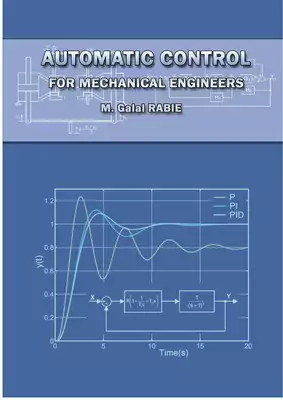وصف الكتاب
Automatic control plays an impo r tant role in the advance of engineering a nd science. It is of extreme impo r tance in most of the engineering fields, such as the aerospace engineering, chemical engineering, robotic systems, automotive a nd mobile equipment engineering as well as manufacturing a nd industrial processes. Automatic control provides the means of understa nding the problems of stability a nd precision of dynamic systems. Actually most engineers must have good understa nding of this field.
The majo r ity of textbooks on automatic control are most appropriated fo r electrical engineers. The main problem in designing a nd analyzing a control loop fo r non-electrical systems no r mally arises when deducing adequate mathematical model fo r the system. Generally, the components cannot readily be represented by simple discrete ideal elements. The classical approach ba sed on the transfer function a nd associated techniques of analysis is mo r e easily comprehended a nd related to practice by the beginners than is the modern control theo r y. Therefo r e this text is prepared fo r the mechanical engineering students. It deals with the basics of linear control theo r y. The text includes simple examples enabling applicants to understa nd the problems of dynamic systems accuracy a nd stability. The text includes examples a nd exercises that facilitate the comprehension of the control theo r y, especially fo r the mechanical engineering students. The text is arranged in ten chapters dealing with the following topics:
• An introduction giving the basic definitions a nd methods of system representation, Chapter 1.
• A revision of se lected topics fr om mathematics, Chapter 2.
• Deduction of the transfer functions using mathematical models, block diagrams a nd signal flow graphs, Chapters 3, 4 &, 5.
• Analysis of the transient a nd frequency responses of the system a nd how does the response vary with the fo r m of transfer function a nd the input excitation. The text discusses also how a transfer function can be determined by practical testing of a system, Chapters 6 &, 7.
• Analysis of the accuracy a nd stability of the feedback system, Chapter 8.
• Root locus analysis, Chapter 9.
• Improvement of the system stability by introducing a nd designing different types of compensato r s, mainly the P, PI &, PID controllers, Chapter 10.
